In October 2017, a streamer integrating Qobuz came to our office. It was something that the brand NuPrime had been promising us for months and months as an improved version of its WR100 model. Curiously, the new device, bearing the reference WR100-D and aesthetically similar to the previous model, was displaying the brand D-Stream tag, a seemingly new brand that wasn’t NuPrime.
It just so happens that this product was developed by several teams, including a French team handling the software section. Notably, it is sold in certain markets under the NuPrime brand, but the French distributor chose to use the new brand.
This isn’t the case (but it might only be temporary?) for the WAMP 200, which will be the subject of this testing ground. This futuristic-looking slim line device is equipped with switching amplification chips delivering 2x60W/8Ω and integrates a network card giving access to Qobuz in CD-quality and also allows you to plug an analog source and a digital source via an optical connection.
It comes with a remote giving you access to the main controls, the complete management being done from the D-Stream Air application available for iOS and Android.
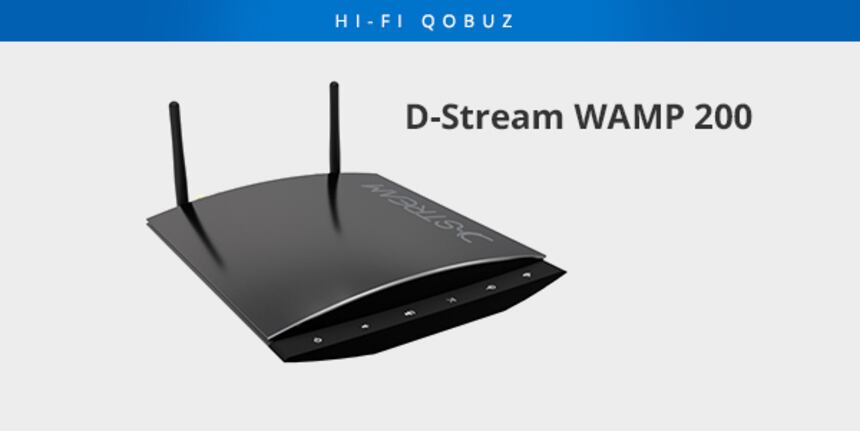
Presentation
The D-Stream WAMP 200 amplifier has opted for a very futuristic look and a CX, that many cars would be jealous of, is provided with it. Its facade contains a horizontal space, on which the main commands are gathered, and whose color change depending on the device’s status (the initialization phase is flickering red for the power key, then steady white) and they light up white when activated, like the volume keys.
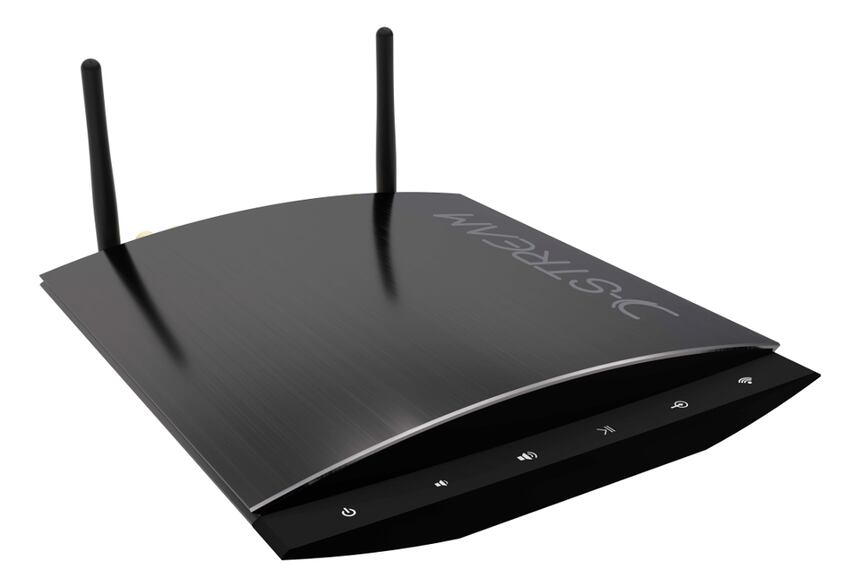
The ‘mode’ key (an arrow in a circle on the right near the transmission indicator LED) corresponds to the source selection and we have noticed an error in the user manual (yellow corresponds to the optical input and purple to the analog input, and not the opposite as stated).
Here is the UFO seen from behind with its four ion engines and bow thrusters… or more precisely its Wi-Fi antennas located besides the speaker terminals, which will accept banana plugs as well as bare wires. Two small push buttons, Direct Mode/Reset and WPS, are located under the terminals of the left speakers while a small slide switch marked Boot is under the terminal of the right speakers.
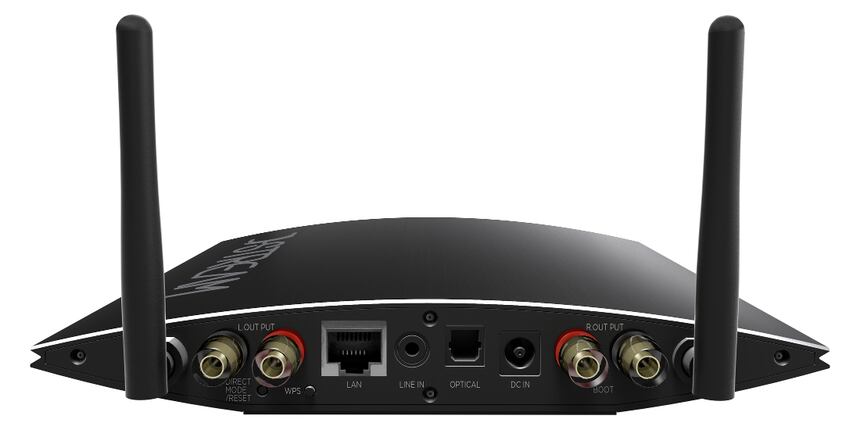
On the remaining area an RJ45 network connector, a 3.5mm Jack line input, an S/PDIF optical input, and the coaxial connector for the power supply are all located.
Manufacturing
The electronics of the WAMP 200 D-Stream streamer amplifier is composed of a main board on which two daughter boards are mounted, one dedicated to Wi-Fi streaming, a Qualcomm Atheros CUS227 model, and the other devoted to an SBC Bluetooth connection (a Laird BTM510 model), and a board located in front gathering the sensitive commands and the visualization using multicolored LEDs. On the left of the Bluetooth card is located the microcontroller labeled Skideev (D-Stream’s parent company) CS2310.
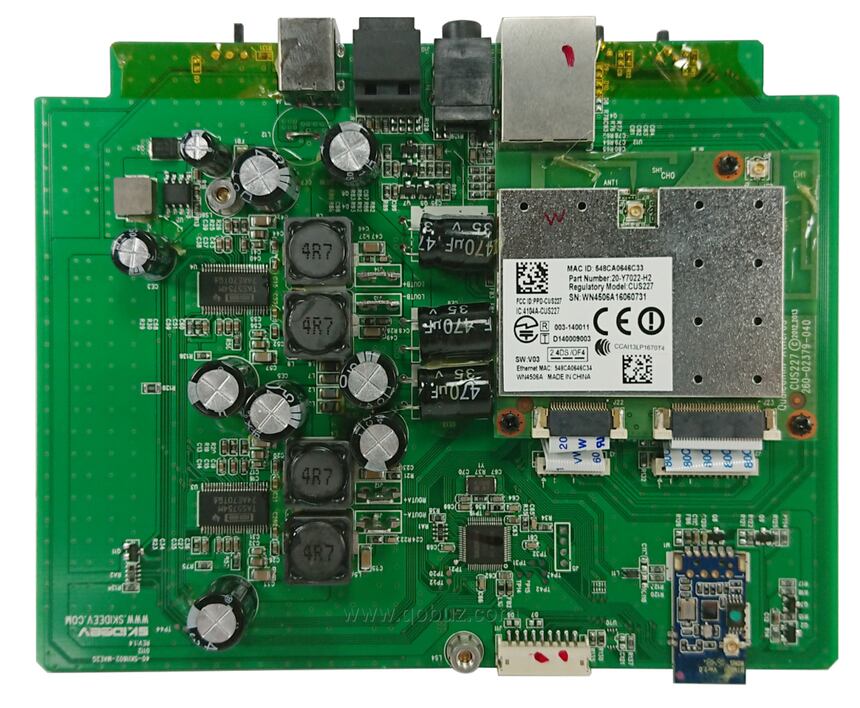
The network card, linked to the main board thanks to two flex circuits, is a Qualcomm Atheros CUS227 model whose hidden face reveals NW361 Nand Flash memory from the brand Micron.
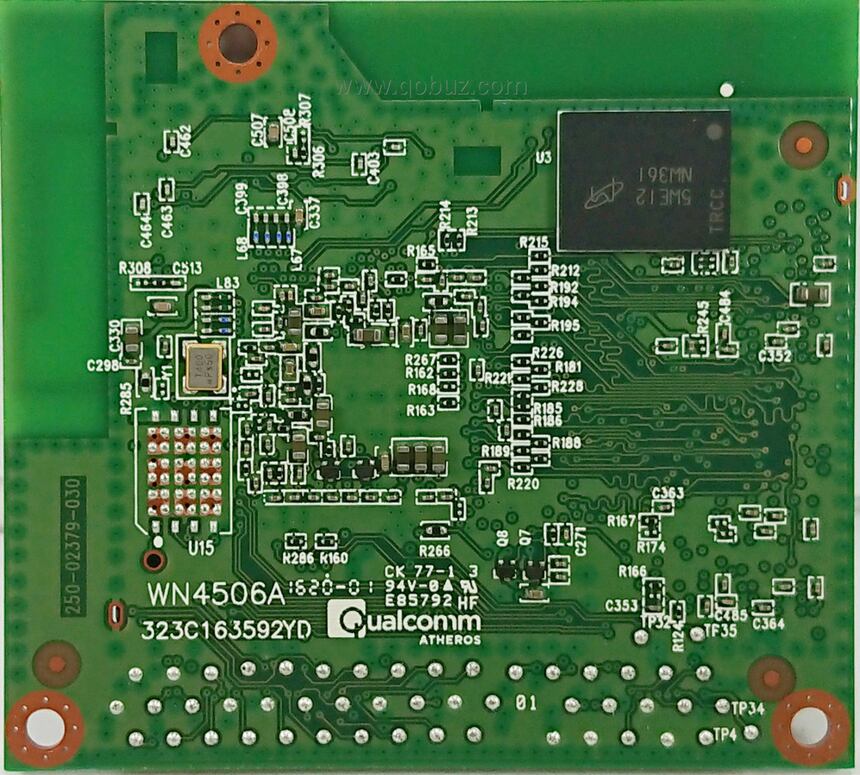
The view below shows the main board without the network card, which will allow you to see the components located below it.
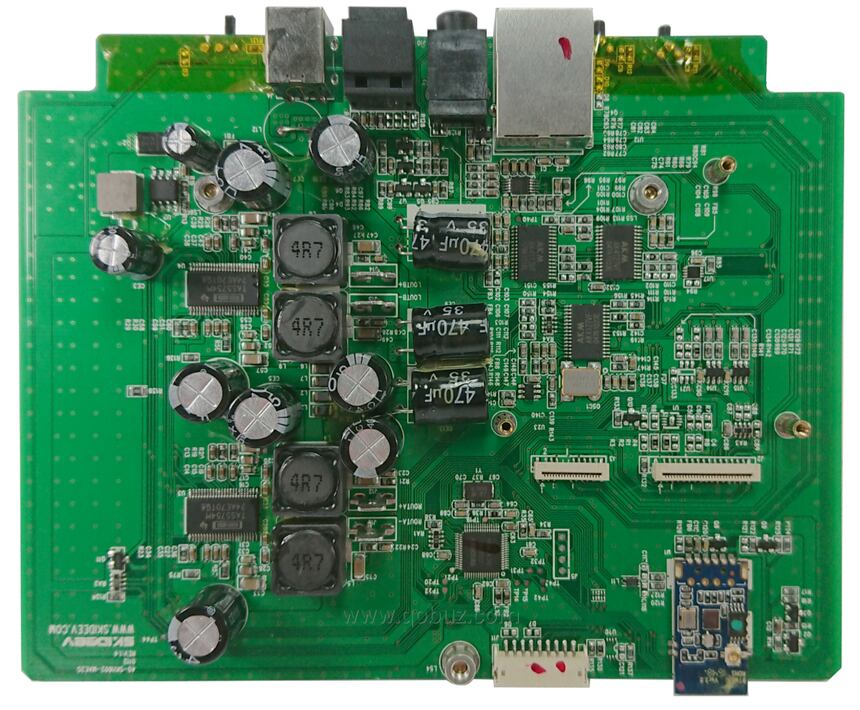
You will find three chips from the manufacturer Asahi Kahei, two AK4127 Sample Rate Converters (SRCs) and one AK4113 Digital Audio Receiver (DIR), which will direct the digital signals coming from the network, the digital optical input or even from the Cirrus Logic CS5343 digital-to-analog converter (a small integrated circuit on the left of the AK4113) which will digitize on 24-Bit/96 kHz the analog signals coming from the auxiliary input.
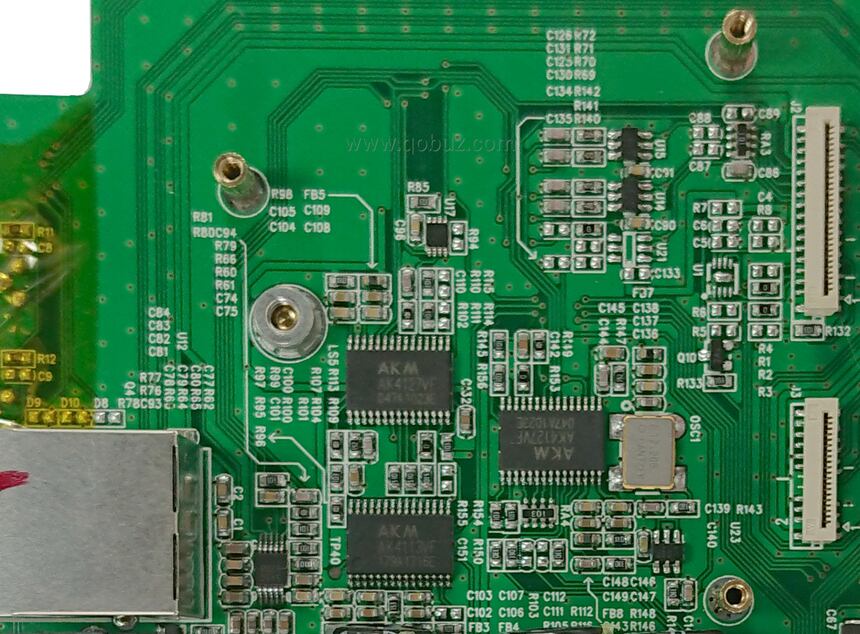
The AK4113 will extract the I2S bus from the digital signals of the selected source and transmit them to the Burr-Brown TAS5754M switching power amplifiers (class-D), which are rather specific in some regards.
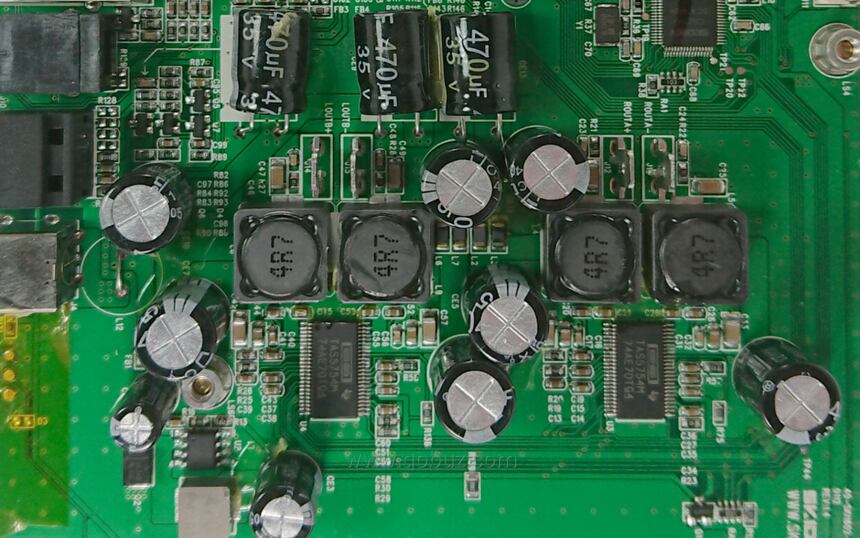
Indeed, the TAS5754M integrates a digital signal processor with a PurePath™ HybridFlow architecture, which can be set up depending on the type of speaker (or group of speakers) the amplifier will be used with.
Following this processor, you will find a digital-to-analog converter per channel, whose signals are then converted into PWM (Pulse Width Modulation) signals, the switching amplification working principle, being handled by power transistors integrated into the chip.
This chip offers another operational particularity called by Burr-Brown 1SPW modulation (and in generic fashion Ternary Modulation) which enables the reduction of the commutation noise of the switching transistors by temporarily maintaining the two branches of the bridge in low state and by commuting only one at a time, which is summed up by the picture that we found on the following webpage: https://www.edn.com/design/consumer/4433405/Ternary-modulation-for-Class-D-amps.
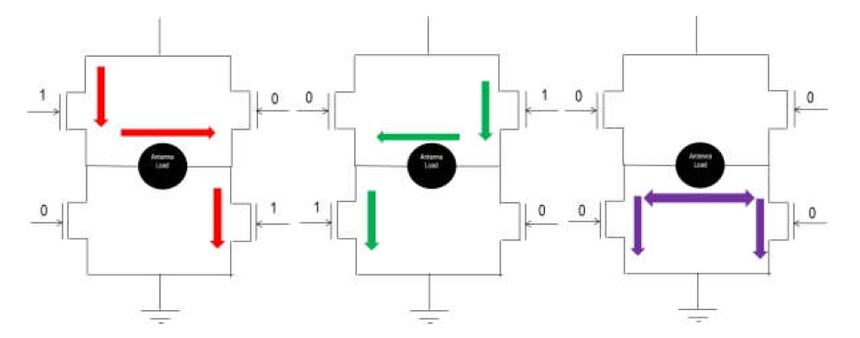
You will notice on the card a dozen 470 μF/35V electrochemical capacitors around the amplifiers, the manufacturer having manifestly mitigated with many elements of lower value the impossibility of putting high-capacity capacitors because of the reduced height of the box.
Sound
We have chosen, to start our listening sessions, the Andanta Spianoto, the first section of the Andante Spianato & Grande Polonaise Brillante from Jan Lisiecki’s 24-Bit/96 kHz Hi-Res album Chopin: Works For Piano & Orchestra.
This long introduction performed by the soloist has been reproduced in all its splendor and gentleness typical of the composer in his highly lyrical works, the beauty of the chords played by the left hand, with much denser bass, is doubled by subtle and as beautiful rises on the harpsichord up to the highest notes, in which you couldn’t perceive any trace of harshness.
However, this allowed us to understand a bit more the behavior of this amplifier on the transitions and also in the treble, and we chose to listen to large extracts from Vivaldi’s album Vespri per l'Assunzione di Maria Vergine by the Concerto Italiano conducted by Rinaldo Alessandrini. The restitution is indeed beautiful, the solo voices seemingly highlighted but the intensity and bite of the chord attacks make way for a rounder interpretation and it becomes rather clear that some harmonics have been somewhat alleviated.
But why not, let’s not forget that the TAS5754M amplification chips integrate a digital signal processor, allowing among other things to compress or expand the dynamics (compander), and that the manufacturer may have programmed it to make these switching amplifiers sound more or less like analog models. This is the impression we got while listening to this WAMP 200.
This almost analog sound, let’s say, appears equally as clear while listening to the track My Sweet Lord from George Harrison’s album All Things Must Pass, with guitar chords that bite much less and George Harrison’s voice and the chorus occupying more of the foreground than usual, and on the whole we noticed a restitution in which accuracy gives way to a more global and consistent vision.
With the titles North Star and Silent Space from the album Tale Of Us, the powerful bass doesn’t cause any trouble for the WAMP 200 and it manages to reproduce them with ease at high sound levels while still being in control, but we are also surprised that some sounds located in the medium frequency bandwidth, and usually rather discreet, are this time somewhat put in the foreground.
To conclude, this D-Stream WAMP 200 streamer amplifier plays the modernity card to offer a sound restitution which seemed to us closer to the one delivered by analog sources than by digital sources. But why not?
User Manual (in English)